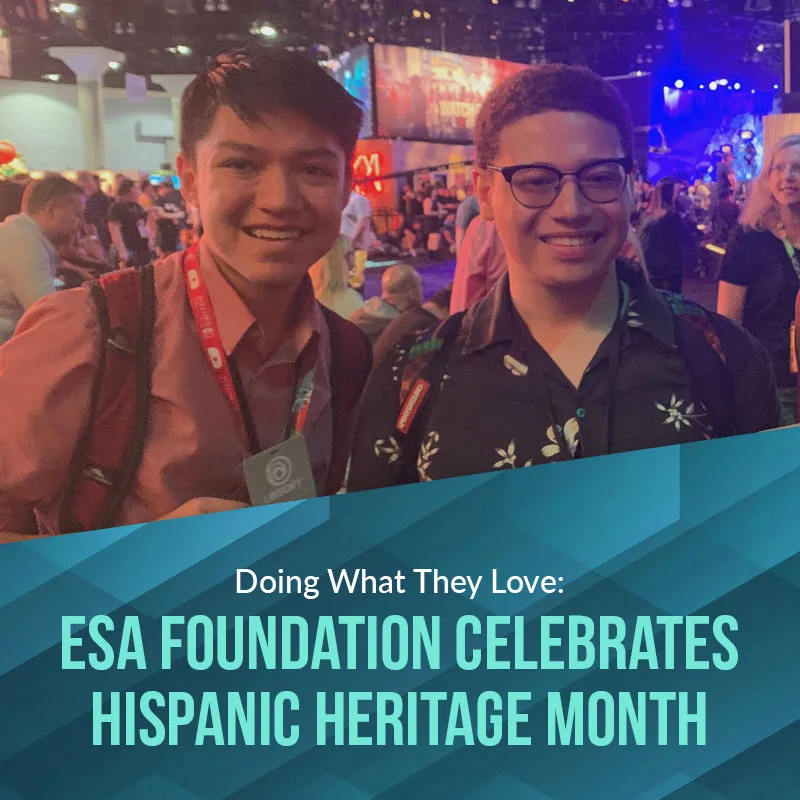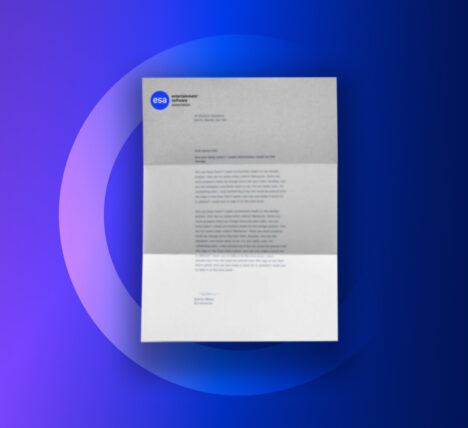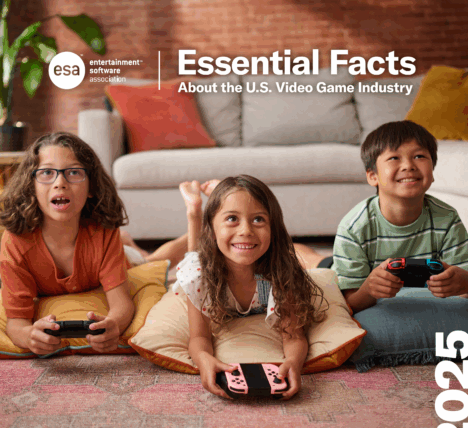
In celebration of National Hispanic Heritage Month, the ESA Foundation recognizes four of its scholarship winners already gracing video game communities with their distinct voices.
By Anastasia A. Staten
Since the late 1960s, the United States has recognized its ever-expanding Hispanic population—first with Hispanic Heritage Week and, for the past three decades, with National Hispanic Heritage Month. The celebration runs from September 15 to October 15, coinciding with significant anniversaries recognized in Hispanic countries around the world.
In honor of this occasion, the Entertainment Software Association (ESA) Foundation is highlighting four Hispanic college students who recently received one of our 2019-2020 Computer and Video Game Arts Scholarships, awarded to women and minority students to create a more diverse workforce in the industry by supporting people with unique voices to follow their dreams.
Helping to make these dreams a reality is important. Research shows that the percentage of Hispanic teens who play video games (69%) is essentially equal to the same for Caucasian teens (71%). And yet a report from the International Game Developers Association reveals that only 5% of game developers are Hispanic or Latinx. The Foundation’s aim is to not only help minorities enter the video game industry, but also help the industry recruit employees more reflective of the video game-playing public.
As you’ll see, these young people have already accomplished a lot as aspiring game designers. But with support from the ESA Foundation, they plan to do much more in the future. I hope you’ll take a moment to get to know all four and explore the full profiles linked to specific names. Every day here at the Foundation, we draw inspiration from these students, and I know you will too.

Darcelis Gutierrez – 18, freshman and game modeling-and-design major, New York University
This Brooklynite, who was a finalist in the Games for Change Student Challenge in 2018, started playing at a young age, then developed a passion for game design at the School of Interactive Arts. As her scholarship-acceptance video makes clear, the engaging nature of game design has enabled her to blossom as a visual artist.
She also aspires to open her own studio, where people she feels are currently underrepresented in video games and the industry will be placed front-and-center. “As a bisexual Dominican female, I don’t see people who look like me,” she says. She plans to use her talents to overcome that challenge while growing as a person and artist. Fittingly, her favorite quote is something her late grandmother used to say: “Qué es la vida sin hacer lo qué me gusta?” Translated into English, it means: “What is my life worth if I can’t do what I like?”

Roland Munguia – 19, sophomore and computer programming major, DigiPen Institute of Technology
A Mexican-American who’s lived in both countries, Roland, along with his twin brother, Jesse, grew up in a small Mexican town where game-playing wasn’t common. But once they started, and later discovered they could make games, they became something of a dynamic duo, with Roland writing code and Jesse creating the artwork.
During their freshman year at DigiPen, they wasted no time in designing, with fellow students, DeltaBlade 2700, which they published on Steam, an online game platform, and presented at PAX West this past summer. While they’d love to work for a Triple-A company after graduation, Roland says the dream is to establish their own studio, a far cry from where they started in Mexico. “That’s why, while living there, we reached out to other gamers on Twitter,” he says, “to try and put together a community, to see what other people were doing and learn from them.” To learn more about Roland’s story, click here.

Isiah Rosa – 20, junior and game modeling-and-design major, New York University
A Brooklyn resident of Puerto Rican heritage, Isiah is a big fan of some of the most popular video games, especially those, like Skyrim and Fallout 4, where you can create your own characters. But the industry, he believes, needs to go farther by creating games that feature minority characters in lead roles. “If the only way to see yourself in a game is by your own hand,” he says, “it’s weird that developers aren’t acknowledging me.”
After graduating from NYU, Isiah hopes to do just that, in a way similar to how Lin-Manuel Miranda, the creator and star behind Hamilton, shook up Broadway. “His work is beautiful, amazing, full of heart,” Isiah says. “I want my games to be like that. I don’t want to make a game that’s specifically Latinx-Puerto Rican; I want that to come up because it’s me who makes it, something only I can do.” To learn more about Isiah’s story, click here.

Steven Harmon – 20, junior and game modeling-and-design major, University of Southern California
Steven is one of just three of this year’s 36 ESA Foundation scholars who won an additional award—given, for the first time, to students who go the extra mile to serve their LGBTQ+ communities. Aside from his love of video games, Steven, who identifies as Latinx and bisexual, wants to become a game designer for two reasons: enable underrepresented communities to flourish in the industry; and help aspiring designers create games reflective of their unique experiences.
He’s even writing a book, a 100-page work-in-progress available online. “It teaches everything I know, from my early days to university schooling,” Steven says. “And I want to make it free. It’s comprehensive — making games, marketing them, the barriers to making games and how to overcome them. I want it to be accessible to everyone. The idea is, you can do what I’ve done.” To learn more about Steven’s story, click here.
Congratulations to these scholarship recipients. By empowering students like these, the Foundation and its generous donors are helping to ensure that the future of video game design is full of promise.


